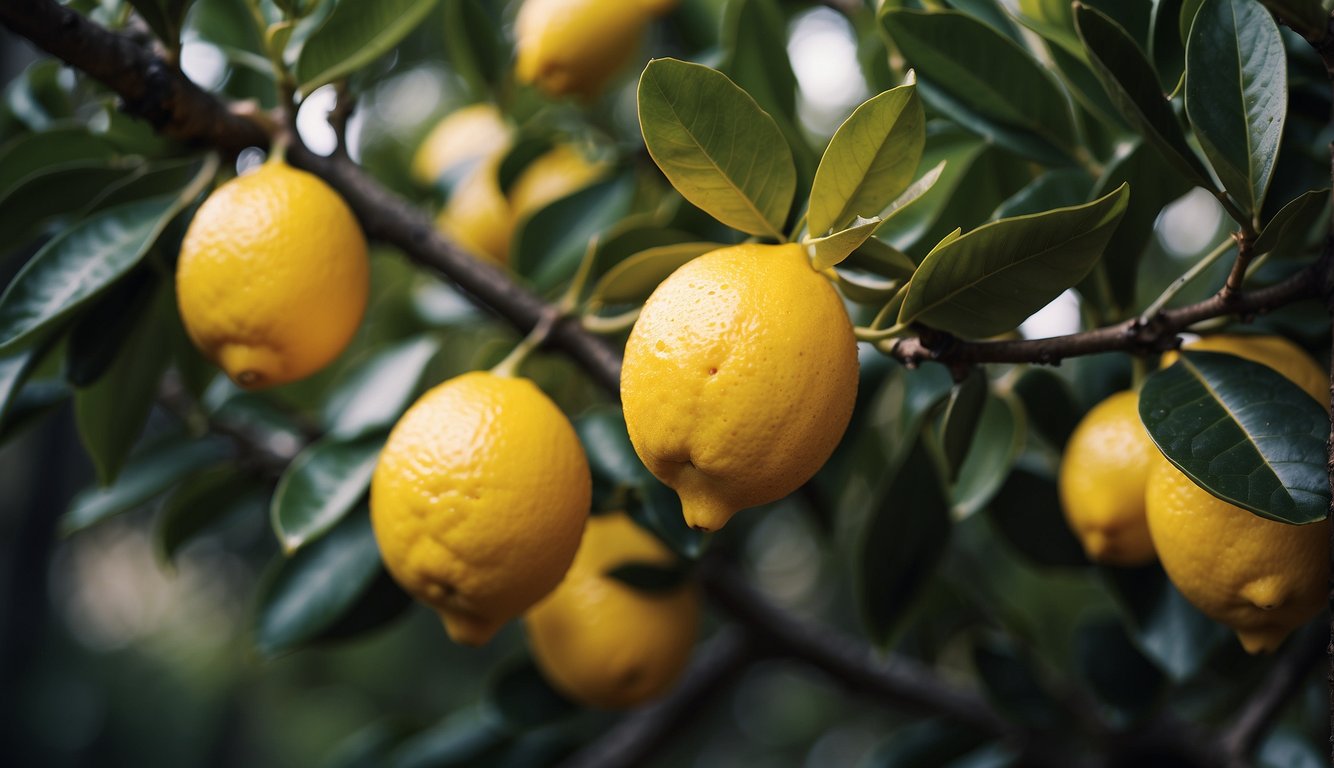I recently noticed no lemons on my lemon tree and wondered what could be the problem. As a lemon tree owner, I know it can be frustrating to put in all the effort to care for your tree, only to be left without any fruit. After doing some research and consulting with experts, I’ve come up with some possible reasons why your lemon tree may not be producing fruit.
One of the most common reasons for a lack of lemons on a lemon tree is that the tree is not mature enough. Lemon trees can take anywhere from two to ten years to bear fruit, depending on whether they were grown from seed or grafted. If your tree is still young, it may just need more time to mature before it starts producing fruit. However, if your tree is older and still not producing fruit, there may be other underlying issues that need to be addressed.
Understanding Lemon Trees – No Lemons on My Lemon Tree
Lemon trees are a type of citrus tree that are commonly grown for their fruit. They are known for their fragrant flowers and bright yellow fruit.
In this section, I will provide an overview of the botanical characteristics of lemon trees, the different varieties of lemon trees, and their growth and maturity stages.
Botanical Characteristics
Lemon trees are small evergreen trees that can grow up to 20 feet tall. They have glossy, dark green leaves and produce fragrant white flowers that bloom in the spring.
The fruit of the lemon tree is a round or oval-shaped fruit with a bright yellow rind and a juicy, acidic pulp.
Lemon trees have a shallow root system that can spread out as far as the tree canopy. They prefer well-drained soil and require regular watering.
Lemon trees are sensitive to frost and cold temperatures and should be protected during the winter months.
Varieties of Lemon Trees
There are several varieties of lemon trees, including the Meyer lemon tree, which is a popular variety for home gardens.
Meyer lemon trees are smaller than other lemon trees and are known for their sweeter, less acidic fruit. They are also more cold-tolerant than other lemon trees and can be grown in cooler climates.
Lemon trees can also be grafted onto different rootstocks, which can affect the growth and fruiting of the tree.
Grafted lemon trees are often preferred over seed-grown lemon trees because they are more reliable and produce fruit sooner.
Growth and Maturity Stages
Lemon trees typically take 3-5 years to mature and begin producing fruit. Young lemon trees may produce fruit that is smaller and less flavorful than mature trees.
It is important to prune lemon trees regularly to promote healthy growth and fruit production.
Optimal Growing Conditions – No Lemons on My Lemon Tree
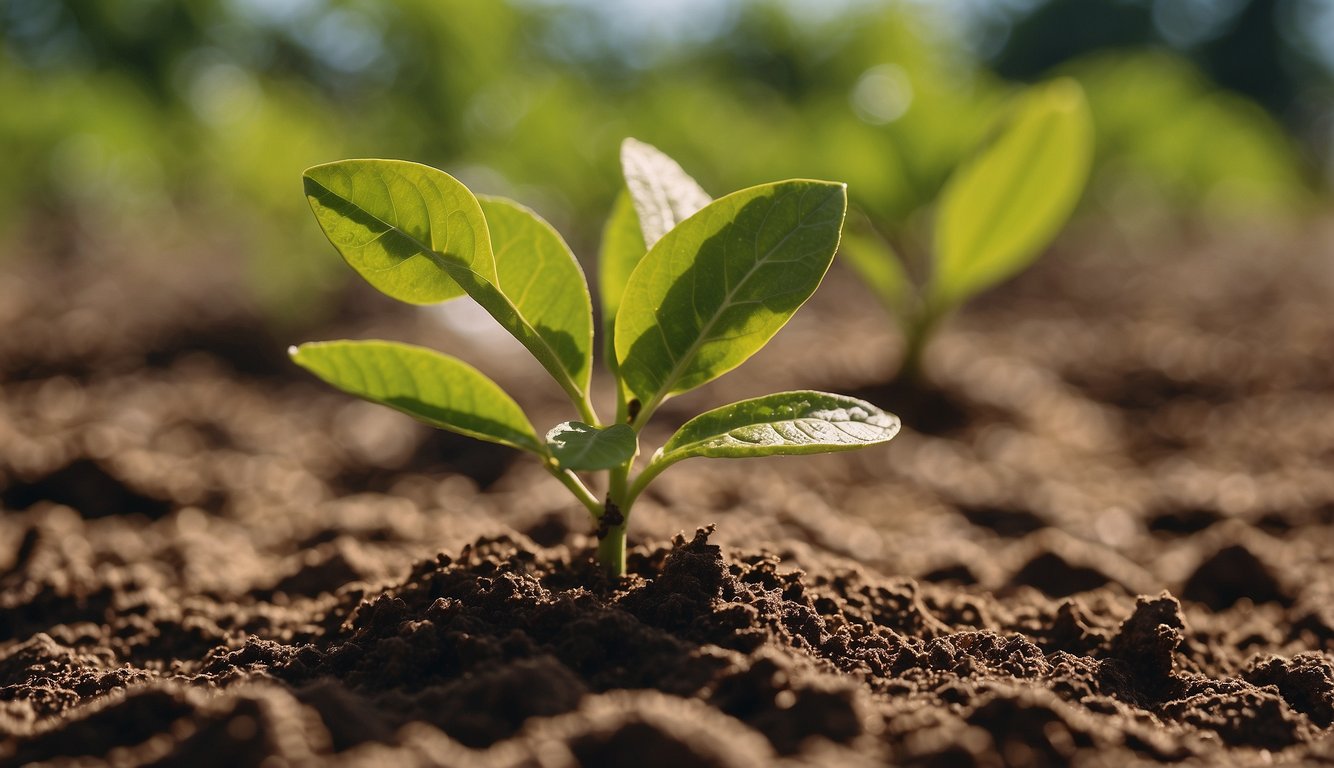
Growing a lemon tree is not that hard, but it requires optimal growing conditions to produce healthy fruit. In this section, I will discuss the soil requirements, watering needs, sunlight and temperature, and wind and cold protection that are essential for growing a healthy lemon tree.
Soil Requirements
Lemon trees grow best in well-draining soil that is rich in organic matter. The soil pH should be between 5.5 and 6.5.
If the soil is too acidic, add dolomite lime to raise the pH level. If the soil is too alkaline, add sulfur to lower the pH level. A soil test can help determine the pH level of the soil and the nutrients that are lacking.
Watering Needs
Lemon trees require regular watering to keep the soil moist but not waterlogged.
Water the tree deeply once a week during the growing season and reduce watering during the winter months. Avoid overwatering as it can lead to root rot and other diseases.
Sunlight and Temperature
Lemon trees require full sunlight to thrive. They need at least 6-8 hours of direct sunlight per day.
If the tree is grown indoors, place it near a south-facing window.
Lemon trees are sensitive to cold temperatures and cannot tolerate frost. They grow best in USDA zones 9-11.
If you live in a colder climate, consider growing a dwarf lemon tree in a container that can be moved indoors during the winter months.
Wind and Cold Protection
Lemon trees are sensitive to wind and cold temperatures. Protect the tree from strong winds by planting it in a sheltered location or using a windbreak.
Cover the tree with a frost cloth or blanket during cold weather to protect it from freezing temperatures.
Caring for Your Lemon Tree – No Lemons on My Lemon Tree
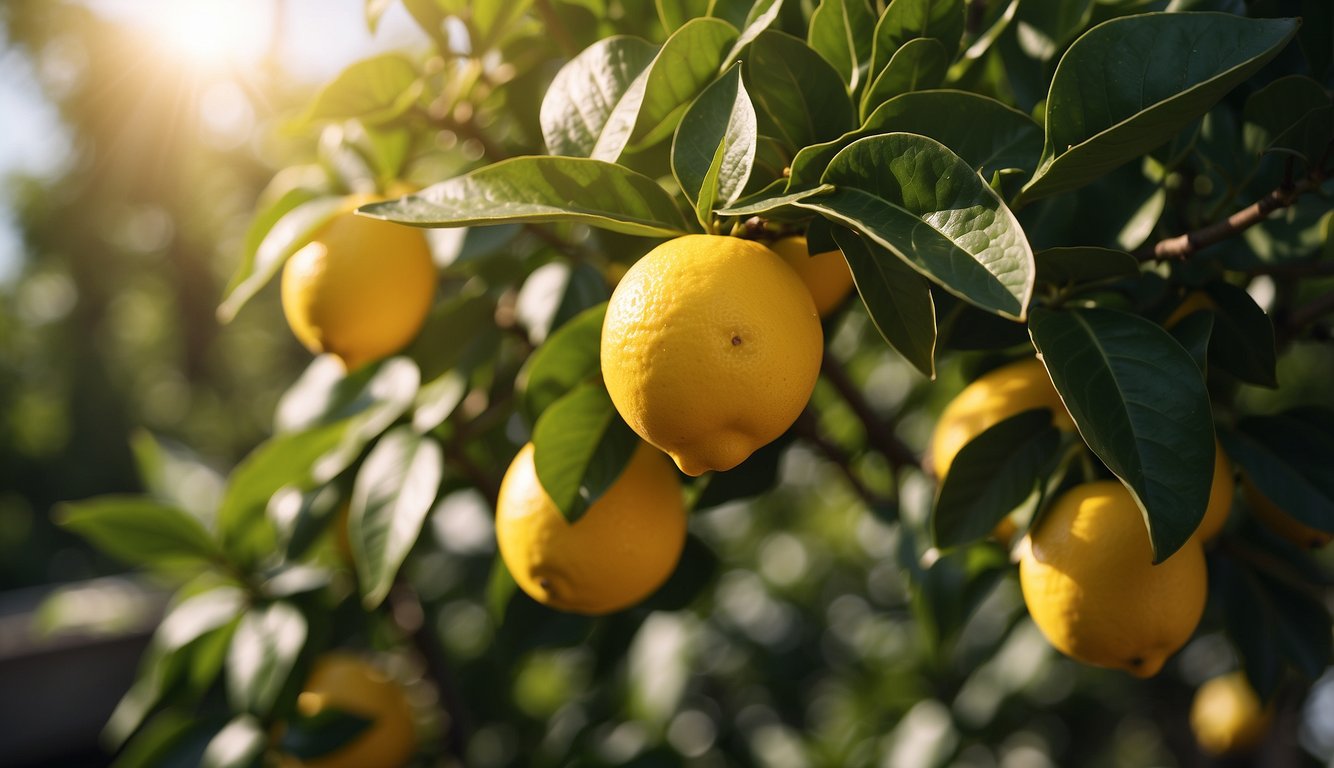
Growing and caring for a lemon tree can be a rewarding experience, but it can also be challenging. Proper care is essential to ensure that your tree produces healthy fruit. Here are some tips on how to care for your lemon tree.
Watering Practices
Watering is one of the most important aspects of lemon tree care. Overwatering or underwatering can lead to poor fruit production or even death of the tree.
It is essential to water your lemon tree deeply and regularly. The frequency of watering will depend on the climate, soil type, and size of the tree. Generally, a mature lemon tree needs about 2 inches of water per week.
Fertilization Strategies
Fertilizing your lemon tree is also crucial for healthy fruit production. A balanced fertilizer with equal amounts of nitrogen, phosphorus, and potassium is recommended.
Fertilize your tree three times a year, in early spring, late spring, and late summer. Be careful not to over-fertilize, as this can lead to excessive leaf growth and poor fruit production.
Pruning Techniques
Pruning is essential for maintaining the shape and size of your lemon tree. It also promotes healthy growth and fruit production.
Prune your tree in late winter or early spring, before new growth appears. Remove any dead or diseased branches, as well as any branches that are crossing or rubbing against each other.
Disease and Pest Management
Lemon trees are susceptible to various diseases and pests. Poor watering practices, nutrient deficiencies, and over-fertilizing can make the tree more susceptible to diseases and pests.
Common diseases include sooty mold, which can be caused by aphids or scale insects, and lesions on leaves, which can be caused by botrytis blight or anthracnose.
Regular inspection of your tree can help identify any problems early, and prompt treatment can prevent further damage.
Troubleshooting Common Problems – No Lemons on My Lemon Tree
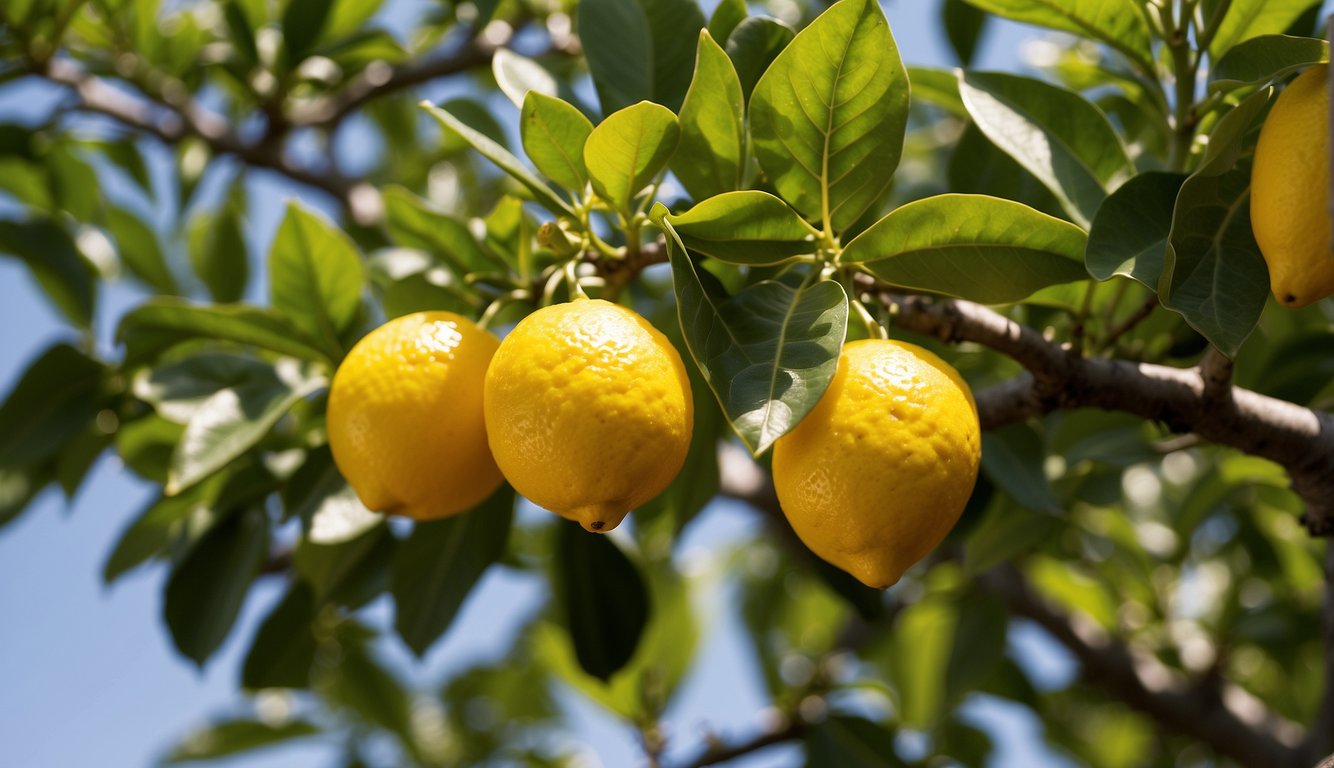
As a lemon tree owner, I understand how frustrating it can be when the tree fails to produce fruit. Several factors can contribute to this issue, including plant health, age, pests, and the quality of the original plant source. In this section, I will cover some common problems that may prevent lemon trees from producing fruit and how to troubleshoot them.
Fruit Production Issues
One of the most common problems that lemon tree owners face is a lack of fruit production. This can be caused by several factors, including poor pollination, bad rootstock, or simply the tree’s age.
To troubleshoot this issue, I recommend checking the tree’s flowers. If you notice that the flowers are falling off before they have a chance to produce fruit, this could be a sign of blossom drop.
Blossom drop can be caused by a lack of nutrients or water, or by environmental factors such as high humidity or extreme temperatures.
Another issue that can prevent fruit production is a lack of pollination. Lemon trees are self-pollinating, but they still require pollinators such as bees and other insects to transfer pollen from flower to flower.
If your lemon tree is not producing fruit, you may want to consider planting flowers that attract pollinators or hand-pollinating the flowers yourself.
Leaf Discoloration and Drop
Yellowing leaves and leaf drop are common problems that lemon tree owners face. These issues can be caused by several factors, including root rot, lack of nutrients, or environmental stressors such as extreme temperatures or wet, humid conditions.
To troubleshoot this issue, I recommend checking the tree’s roots for signs of rot or damage. If the roots are healthy, you may want to consider increasing the tree’s nutrient intake by fertilizing it or adjusting the pH level of the soil.
Root-Related Challenges
Root-related challenges are another common problem that lemon tree owners face. Root rot, caused by overwatering or poor drainage, is a common problem that can lead to yellowing leaves, leaf drop, and stunted growth.
To troubleshoot this issue, I recommend checking the tree’s roots for signs of rot or damage. If the roots are healthy, you may want to consider adjusting the tree’s watering schedule or improving the drainage in the soil.
Enhancing Lemon Yield – No Lemons on My Lemon Tree
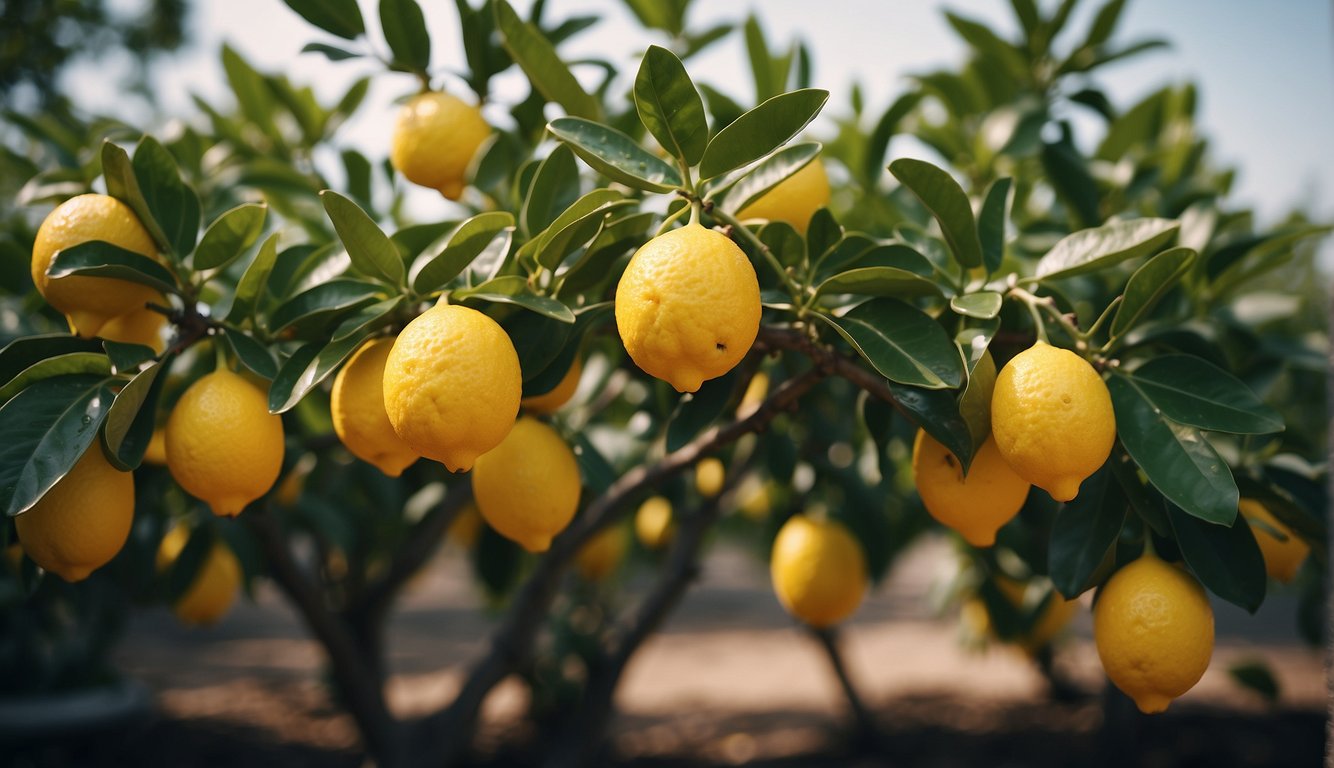
As a lemon tree owner, I understand the frustration of not having any lemons on your tree. However, there are some steps you can take to enhance the yield of your lemon tree. In this section, I will discuss some effective ways to increase the production of lemons on your tree.
Effective Fertilization
Fertilization is an important step in enhancing the yield of your lemon tree. Nitrogen, phosphorus, iron, magnesium, potassium, zinc, and calcium are some of the essential nutrients that your lemon tree needs to produce healthy fruits.
You can use a slow-release fertilizer that contains these nutrients to provide your tree with the necessary nutrients.
Adequate Pollination
Pollination is another important factor that affects the production of lemons on your tree. Bees are the primary pollinators of citrus trees, including lemon trees.
You can attract bees to your garden by planting flowers that are rich in pollen and nectar. Additionally, you can use a paintbrush to transfer pollen from the male flowers to the female flowers, which will increase the chances of fruit production.
No Lemons on My Lemon Tree – Stress Management
Stress can also affect the production of lemons on your tree. Stress can be caused by insufficient water, extreme temperatures, pests, and diseases.
To manage stress, you can mulch around the base of your tree to help retain moisture, deep water your tree regularly, and protect it from extreme temperatures. You can also use pesticides and fungicides to control pests and diseases that can stress your tree.
Harvesting and Utilization – No Lemons on My Lemon Tree
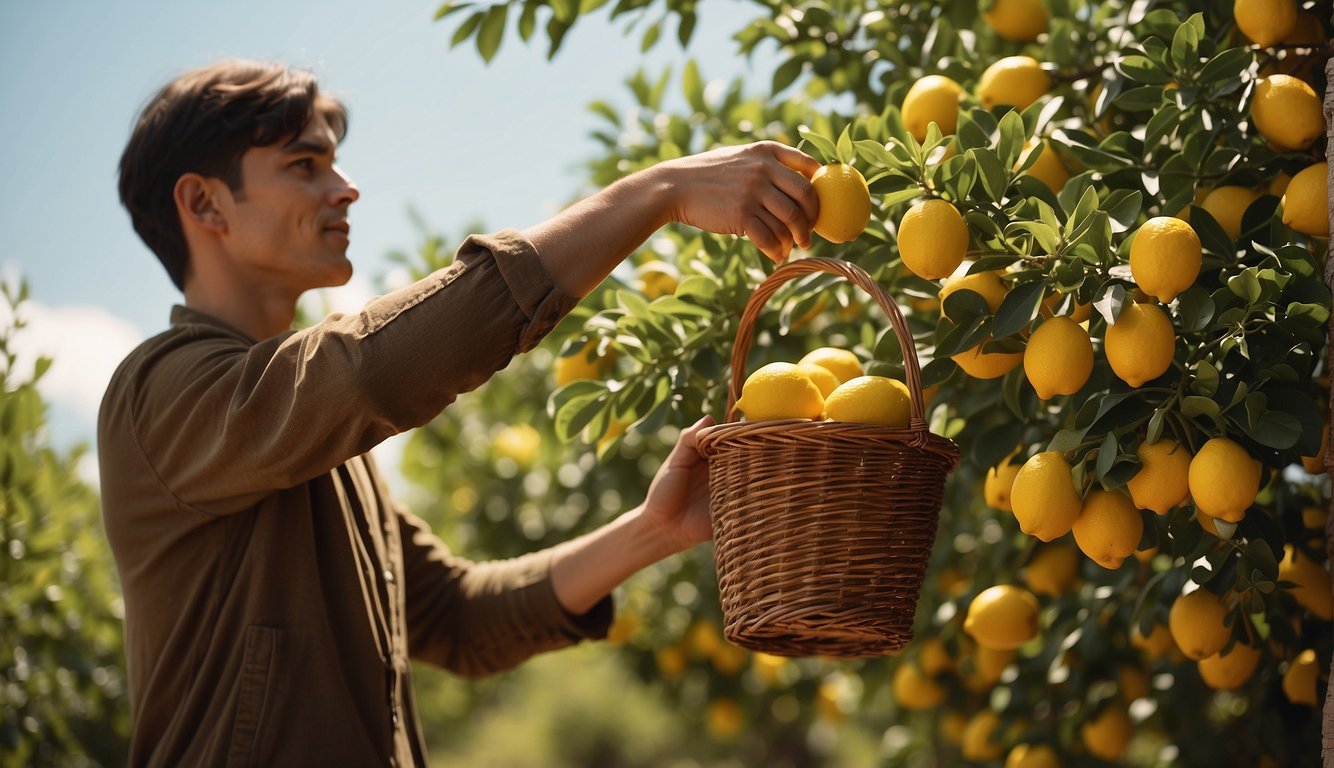
Best Practices for Harvesting
When it comes to harvesting lemons, timing is key. The best time to pick your lemons is when they are fully ripe and have reached their optimal size.
You can tell if a lemon is ripe by its color. A ripe lemon will have a bright yellow color and a glossy texture. If your lemons are still green, it means they are not yet ripe and should be left on the tree for a few more days.
To harvest your lemons, you can simply twist them off the tree or use a pair of pruning shears to cut them off.
It’s important to handle your lemons with care to avoid damaging the fruit or the tree. When picking your lemons, avoid pulling them off the tree as this can damage the branch and reduce the overall yield.
Using Your Lemons
Fresh lemons are a versatile fruit that can be used in a variety of recipes. From lemonade to lemon bars, there are many ways to incorporate the tangy flavor of lemons into your cooking.
You can also use lemon juice as a natural preservative for fruits and vegetables.
If you have an abundance of lemons, you can also consider preserving them for later use.
One popular method of preserving lemons is by pickling them in salt. This not only extends their shelf life but also enhances their flavor.
When using your lemons, it’s important to keep in mind the fruiting season. Lemon trees typically produce fruit in the summer months, so plan your recipes accordingly.
Additionally, the maturity of the fruit can also affect its flavor and texture. Fully mature lemons will have a sweeter taste and a softer texture compared to younger fruit.
Squeezing No Lemons on My Lemon Tree with TheHerbProf
Let’s explore how our No Lemons on My Lemon Tree guide and the herbal wisdom at theherbprof.com can work together.
Our No Lemons on My Lemon Tree guide is your first step to a fruitful lemon tree. But what about the rest of the journey? That’s where theherbprof.com comes in. It’s your herbal encyclopedia, including lemon tree care!
Picture this. You’ve followed our No Lemons on My Lemon Tree guide and your lemon tree is thriving. But you’re unsure about pest control or when to water. No problem! Theherbprof.com has all the answers. It offers a wealth of information on how to care for your lemon tree.
And there’s more! Theherbprof.com also shares the health benefits of lemons. So, while you’re enjoying the fruits of your labor, you’re also learning about their nutritional value.
So, let’s get growing with our No Lemons on My Lemon Tree guide and let theherbprof.com guide us on this lemon-growing journey.
References – No Lemons on My Lemon Tree
Little Herb Encyclopedia, by Jack Ritchason; N.D., Woodland Publishing Incorporated, 1995
The Ultimate Healing System, Course Manual, Copyright 1985, Don Lepore
Planetary Herbology, Michael Tierra, C.A., N.D., Lotus Press, 1988
Handbook of Medicinal Herbs, by James A. Duke, Pub. CRP Second Edition 2007
The Complete Medicinal Herbal, by Penelope Ody, Published by Dorling Kindersley
Check the Following Articles!
Storage Apples: How to Keep Them Fresh for Longer
How to Grow Carrots in a Container? Tips and Tricks
Coffee House Plant: How To Grow And Care
How to Fertilize Tomato Plants? A Comprehensive Guide
Frequently Asked Questions – No Lemons on My Lemon Tree
Why is my Meyer lemon tree not producing fruit?
There could be several reasons why your Meyer lemon tree is not producing fruit.
One of the most common reasons is that the tree is not mature enough to bear fruit. Lemon trees can take anywhere from 2-10+ years to fruit, depending on whether they were grafted or grown from seed.
Other reasons could be improper pruning, inadequate sunlight, poor soil quality, pests or diseases, and lack of pollination.
How often do lemon trees bear fruit throughout the year?
Lemon trees can bear fruit several times throughout the year, depending on the variety and growing conditions.
In general, most lemon trees produce fruit twice a year, once in the spring and once in the fall. However, some varieties, such as the Eureka lemon, can produce fruit year-round.
At what stage do lemon tree flowers develop into lemons?
Lemon tree flowers typically develop into lemons within 6-9 months after pollination.
However, not all flowers will develop into fruit. In fact, it is common for lemon trees to drop some of their flowers or small fruit during the growing season as a natural thinning process.
What is the typical fruiting season for lemon trees?
The typical fruiting season for lemon trees varies depending on the variety and growing conditions.
In general, lemon trees produce fruit in the spring and fall, with the heaviest crop usually occurring in the winter. However, some varieties can produce fruit year-round, such as the Meyer lemon.
How long does it take for a lemon tree to produce fruit after planting?
Lemon trees can take anywhere from 2-10+ years to produce fruit, depending on whether they were grafted or grown from seed.
However, if you purchase a mature tree from a nursery, it may start producing fruit within the first year or two after planting.
What are the best practices for fertilizing a lemon tree to enhance fruit production?
The best practices for fertilizing a lemon tree to enhance fruit production include using a balanced fertilizer with a ratio of 8-8-8 or 10-10-10. Apply the fertilizer in the spring and fall, and avoid over-fertilization.
It is also important to ensure that the soil is well-draining. Additionally, make sure that the tree is receiving adequate water and sunlight.
